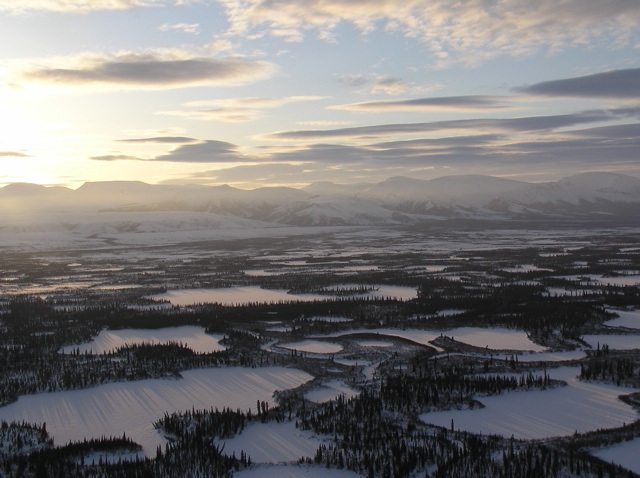
Discussion
The study of animal interactions is a fascinating field that is emerging in wildlife ecology. Despite the fact that radio-telemetry or GPS tracking are widely available and used since the late 1970’s, the tentative to use those locations and understand spatial interactions at the dynamic level is relatively new. In this study, I show that even in the absence of real observations of interactions, the locations of the individuals enable us to detect potential relationships. In occurrence, there is a clear proximity between many Dall’s sheep and grizzly bears, particularly in the eastern range of the Goodenough Mountain, as indicated by the MDS plots and the Pearson’s correlation test. In fact, the Dall’s sheep DS02 died or lost its collar shortly after its close encounter with the grizzly bear G1177F, which could indicate a predation event, although the case has not been investigated in the field. One of the limitation of multivariate statistics is that they only indicate correlation between variables; they can suggest causes, but derived factors and clusters do no necessarily reflect biological factors or clusters in nature (James and McCulloch 1990). We will need to investigate predation in the field, complemented by behavioural observations and the study of wolf and grizzly bear's diets, before we can validate the relationships suggested from the study of spatial interactions.
The lack of apparent association with wolves could be related to the fact that we only had two wolf packs monitored at this time. Moreover, we only had few locations for those wolves compared to the other species. Their collars are transmitting in an irregular fashion, perhaps because other members of the pack, or else wolf pups, have bitten and destroyed parts of the collar. I am hoping we will be able to recover more collars and wolf locations in 2007. Nevertheless, wolves appeared to be in lower elevation and occur more forested areas than sheep or grizzly bears. If this relation is real, it could indicate that wolves in the area rely mostly on moose, which can be mostly found in river drainages, at lower elevations. They may then have a lower predatory pressure on the sheep population than previously expected. The marking of a third or fourth pack in the core Dall's sheep area (Goodenough Mountain), in 2007, will likely yield more information about the potential impact of wolves on this Dall’s sheep population.
The layers selected for the analysis of habitat selection were not necessarily sufficient, as they explained only about 50% of the habitat use. Finding Dall's sheep in higher elevations is not surprising, as they are associated to mountains and escape terrain throughout their range. A more southerly aspect for all the species also make sense, since the Richardson Mountains can be a very cold and harsh environment, even in the summer. Because this area lies above the Arctic Circle and is characterized by six weeks of constant sun in the summer and four weeks of total darkness in the winter, a temporal analysis of preferences for slope, but also of interactions and other layers, would be biologically meaningful. Finer layers of vegetation and habitat type would need to be added to this analysis in the future.
Future directions and conclusion
This study yielded very interesting preliminary results concerning the relationships and habitat use of Dall's sheep, grizzly bears and wolves in the Richardson Mountains. As pointed out, there seems to be a positive association between grizzly bears and Dall's sheep, which needs to be investigated further. The interactions with wolves will likely become clearer as additional packs will get collared in 2007. Future analyses will include a Resource Selection Function in relation with additional habitat layers, and in relation with the other species' probability of occurence. Collaborative work with other agencies should enable me to include distribution and abundance of other species -such as moose, caribou, muskox, golden eagles, etc. Multi-species projects like this one surely challenge our understanding of ecological interactions, and can lead to stimulating discoveries in terms of results, but also in terms of techniques of analysis. Multivariate statistics were successful in illustrating various relationships between species and individuals, and have opened doors to fascinating avenues in the study of large mammals interactions.



